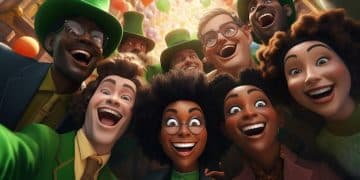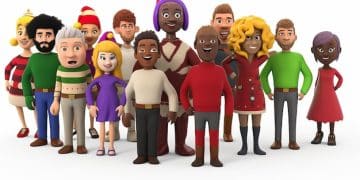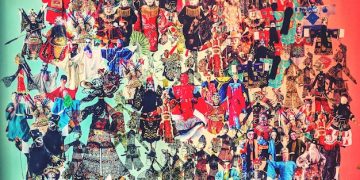AI Animation vs. Traditional Animators: A US Job Market Analysis
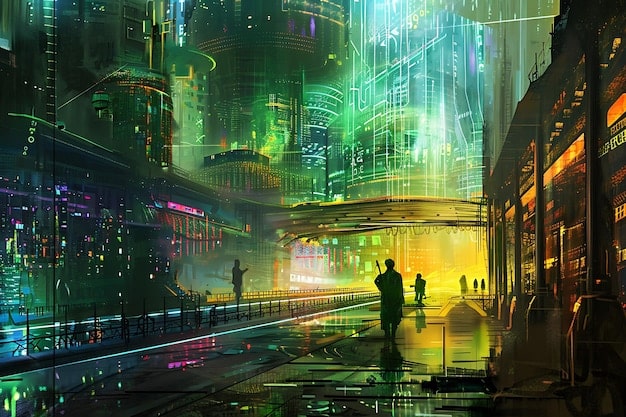
The rise of AI-generated animation poses both opportunities and challenges to traditional animators in the US, potentially reshaping the industry and requiring professionals to adapt to new technologies.
The animation industry is experiencing rapid changes. The question of whether the rise of AI-generated animation is a threat to traditional animators in the US is becoming increasingly relevant. As AI technology advances, it’s essential to analyze the potential impacts on the animation job market and the skills required for animators.
The Current State of Animation in the US
The animation industry in the US is vibrant and diverse, encompassing feature films, television series, video games, and commercials. Traditional animation techniques, such as hand-drawn animation and stop motion, still hold a significant place alongside more modern methods like 3D animation and CGI.
The demand for animated content continues to grow, fueled by streaming platforms and the increasing popularity of animated series and movies. This demand has supported a substantial workforce of animators across the country. However, the introduction of AI-generated animation tools is beginning to change the landscape.
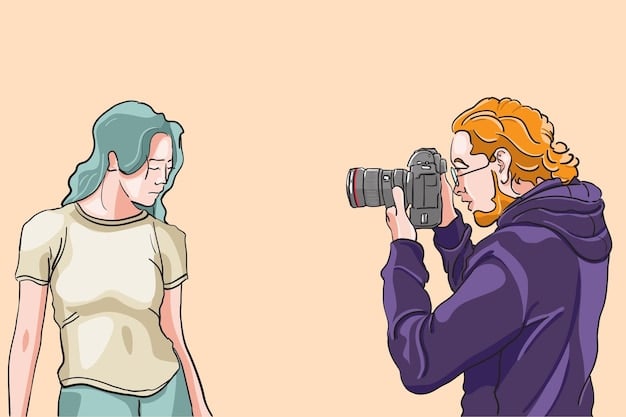
Traditional Animation Techniques
Traditional animation relies on the skill and artistry of individual animators who create each frame by hand. Techniques like cel animation, where drawings are created on transparent celluloid sheets, and stop motion, where physical objects are moved incrementally between photographs, are time-consuming but produce unique and visually appealing results.
These methods require a deep understanding of anatomy, movement, and storytelling. While they can be labor-intensive, they also allow for a high degree of artistic control and personal expression.
- Hand-Drawn Animation: Frame-by-frame drawings bring characters to life.
- Stop Motion: Physical objects are manipulated and photographed.
- Cel Animation: Drawings on celluloid allow for layered animation.
The Rise of AI in Animation
AI-generated animation involves using artificial intelligence algorithms to create animated content. These tools can automate various aspects of the animation process, such as generating in-between frames, creating realistic character movements, and even designing entire scenes. AI can significantly reduce production time and costs.
While AI has the potential to democratize animation by making it more accessible to smaller studios and independent creators, it also raises concerns about the displacement of traditional animators. The ability of AI to quickly produce animations that once required teams of artists is a significant shift in the industry.
The current state of animation in the US is a blend of traditional artistry and emerging AI technologies. While traditional methods remain valued for their unique qualities, AI is increasingly being adopted to streamline production and explore new creative possibilities.
How AI is Changing the Animation Process
AI is revolutionizing the animation process by automating tasks that were once time-consuming and labor-intensive. From generating initial character designs to creating complex scenes, AI tools are changing how animators work and collaborate.
These technological advancements offer new possibilities for studios and creators, but also pose challenges for animators who need to adapt to these changes.
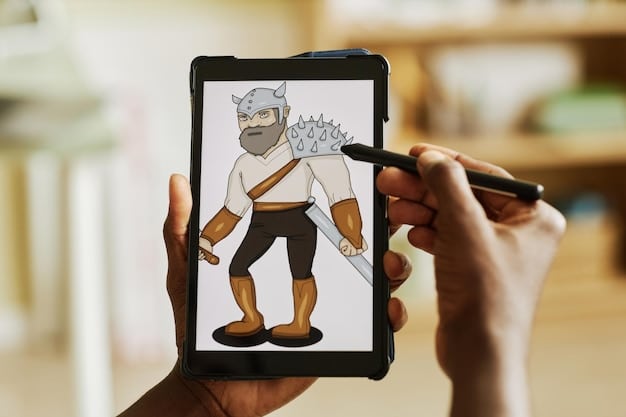
AI Tools for Animation
Several AI-powered tools are now available for animation. These tools can assist with tasks such as motion capture, character rigging, and scene generation. For example, AI can analyze motion capture data to create realistic character movements or generate background scenery based on specific prompts.
AI can also be used for style transfer, allowing animators to apply the visual style of one artwork to another. This can be particularly useful for creating animations that mimic the look of hand-drawn art or other traditional techniques.
- Motion Capture: AI refines and enhances captured movements.
- Character Rigging: Automated rigging simplifies character animation.
- Scene Generation: AI creates detailed background environments.
Impact on Production Timelines
One of the most significant impacts of AI is its effect on production timelines. AI can accelerate the animation process, reducing the time required to create animated content. This is especially beneficial for projects with tight deadlines or limited budgets.
However, the increased speed of production also raises questions about the quality and originality of the work. While AI can generate animations quickly, it may lack the creative nuances and artistic touches that human animators bring to their work.
AI is transforming the animation process by automating tasks, reducing production timelines, and offering new creative possibilities. Animators are increasingly using AI tools to enhance their workflows and create innovative content.
The Threat to Traditional Animators
The integration of AI in animation raises concerns among traditional animators about job security and the devaluation of their skills. As AI becomes more capable of producing high-quality animations, the demand for human animators in certain roles may decrease.
This potential threat is not limited to entry-level positions. AI could also impact more experienced animators who specialize in tasks that can be easily automated.
Job Displacement Concerns
One of the primary concerns is job displacement. If AI can perform animation tasks more efficiently and at a lower cost, studios may choose to reduce their reliance on human animators. This could lead to layoffs and a reduction in job opportunities for animation professionals.
However, it’s important to note that AI is not a complete replacement for human creativity. Animators bring unique skills and perspectives to their work, such as storytelling, character development, and artistic vision. These qualities may be difficult for AI to replicate fully.
- Reduced Demand: AI automates tasks, decreasing job openings.
- Skill Devaluation: Traditional skills may be seen as less valuable.
- Job Uncertainty: Animators face concerns about long-term prospects.
Adapting to the Changing Landscape
To mitigate the potential threat of AI, traditional animators need to adapt to the changing landscape of the animation industry. This may involve learning new skills, such as AI prompt engineering and workflow integration. Animators who can effectively use AI tools to enhance their work will be more competitive in the job market.
Additionally, animators can focus on developing skills that are difficult for AI to replicate, such as creative problem-solving, emotional expression, and collaborative teamwork. By emphasizing these unique human qualities, animators can differentiate themselves from AI-generated content.
The rise of AI in animation presents a genuine threat to traditional animators in the US. However, by adapting to the changing landscape, developing new skills, and emphasizing their unique abilities, animators can navigate this challenge and continue to thrive in the industry.
Opportunities for Animators in the Age of AI
While AI poses a threat, it also creates new opportunities for animators. AI tools can augment the abilities of human animators, allowing them to work more efficiently and explore new creative possibilities. By embracing AI as a tool rather than a replacement, animators can enhance their skills and expand their career options.
The integration of AI can lead to more diverse and innovative animation projects, requiring animators to collaborate with AI systems and develop hybrid workflows.
AI as a Collaborative Tool
AI can be viewed as a collaborative tool that assists animators with various tasks. For example, AI can generate initial character designs or create rough animations, which animators can then refine and personalize. This collaboration can save time and effort, freeing animators to focus on the more creative aspects of their work.
AI can also help animators overcome technical challenges, such as creating complex visual effects or generating realistic character movements. By leveraging AI’s capabilities, animators can achieve results that would be difficult or impossible to create manually.
- Efficiency Gains: AI automates repetitive tasks.
- Creative Exploration: AI suggests new ideas and styles.
- Enhanced Productivity: Animators can achieve more in less time.
New Roles and Specializations
The integration of AI into the animation industry is creating new roles and specializations for animators. For example, AI prompt engineers are needed to design and refine AI algorithms, ensuring they produce high-quality animations. AI workflow specialists are also required to integrate AI tools into existing animation pipelines.
Animators who can work with AI systems and develop hybrid workflows will be in high demand. These animators will need to possess a combination of traditional animation skills and AI expertise, making them valuable assets to studios and production companies.
AI presents both threats and opportunities for animators. By embracing AI as a collaborative tool, developing new skills, and exploring new roles, animators can thrive in the age of AI and contribute to the evolution of the animation industry.
The Future of Animation Education
Animation education is evolving to prepare students for the changing landscape of the industry. Traditional animation skills remain essential, but educators are also incorporating AI training into their curricula. This ensures that graduates are equipped with the knowledge and skills needed to succeed in the AI-driven animation world.
The future of animation education involves a balanced approach, combining traditional techniques with cutting-edge AI technologies.
Curriculum Changes
Animation schools are adapting their curricula to include AI-related topics. Courses on AI animation tools, machine learning, and data analysis are becoming increasingly common. These courses teach students how to use AI to enhance their animations, automate tasks, and create new types of content.
Additionally, animation schools are emphasizing the importance of creative problem-solving, storytelling, and artistic expression. These skills are difficult for AI to replicate and will be crucial for animators who want to differentiate themselves from AI-generated content.
- AI Integration: Curricula include AI animation tools.
- Skill Enhancement: Students learn to automate tasks.
- Creative Emphasis: Storytelling and artistry are prioritized.
Preparing Students for the Industry
Animation educators are working to prepare students for the realities of the AI-driven animation industry. This involves providing students with hands-on experience using AI tools, as well as teaching them how to collaborate with AI systems. Students are also encouraged to develop their own unique artistic styles and perspectives.
Furthermore, animation schools are fostering partnerships with industry professionals and studios to ensure that their curricula remain relevant and up-to-date. These partnerships provide students with valuable networking opportunities and insights into the latest trends and technologies.
The future of animation education involves a comprehensive approach that combines traditional skills with AI training. By adapting their curricula and preparing students for the industry, animation schools can ensure that graduates are well-equipped to thrive in the evolving world of animation.
Case Studies: AI in Action
Several animation studios and independent creators are already using AI in their projects. These case studies highlight the potential benefits and challenges of AI-generated animation, providing valuable insights into how AI is transforming the industry.
These examples demonstrate the diverse applications of AI in animation, from streamlining production to creating entirely new forms of content.
Studio Success Stories
One example is a studio that used AI to automate the process of generating in-between frames, which significantly reduced production time. The AI tool analyzed keyframes created by animators and generated the frames needed to create smooth and realistic motion. This allowed the animators to focus on more complex tasks, such as character rigging and scene design.
Another studio used AI to create realistic facial expressions for animated characters. The AI tool analyzed video footage of human actors and generated corresponding facial movements for the characters, resulting in more lifelike and engaging performances.
- Efficient Production: AI reduces animation time.
- Realistic Expressions: AI enhances character performances.
- Creative Innovation: AI enables new visual styles.
Independent Creator Innovations
Independent creators are also leveraging AI to create innovative animation projects. One artist used AI to generate unique background environments for their animated short film. The AI tool created detailed and visually stunning landscapes based on the artist’s prompts, saving them countless hours of work.
Another creator used AI to animate a series of digital paintings, bringing them to life with subtle movements and effects. The AI tool analyzed the paintings and generated animations that preserved the artist’s original style and vision.
These case studies demonstrate the potential of AI to transform the animation industry. By automating tasks, enhancing creativity, and enabling new forms of content, AI is empowering animators and creators to achieve more than ever before.
| Key Point | Brief Description |
|---|---|
| 🚀 AI Impact | AI automates tasks, altering production. |
| 💼 Job Security | Animators fear displacement but can adapt. |
| 🎨 New Skills | Learn AI tools to enhance traditional skills. |
| 📚 Education | Curricula are evolving to include AI training. |
Frequently Asked Questions
▼
AI is unlikely to completely replace human animators. Instead, it will likely automate certain tasks and augment the abilities of human animators, enabling them to work more efficiently.
▼
Animators should focus on developing skills that are difficult for AI to replicate, such as storytelling, character development, artistic vision, and creative problem-solving.
▼
AI is being used to automate tasks such as generating in-between frames, creating realistic character movements, and designing background environments. This helps studios reduce production time.
▼
Ethical considerations include job displacement, the potential for biased algorithms, and the need to ensure that AI-generated content is original and does not infringe on existing copyrights.
▼
Animation educators can incorporate AI training into their curricula, emphasizing both traditional animation skills and AI expertise. This prepares students to work effectively with AI tools.
Conclusion
In conclusion, while the rise of AI-generated animation presents challenges to traditional animators in the US, it also offers new opportunities for those who are willing to adapt and embrace the technology. The key to success lies in developing a combination of traditional skills and AI expertise, ensuring that animators can thrive in the evolving animation industry.
